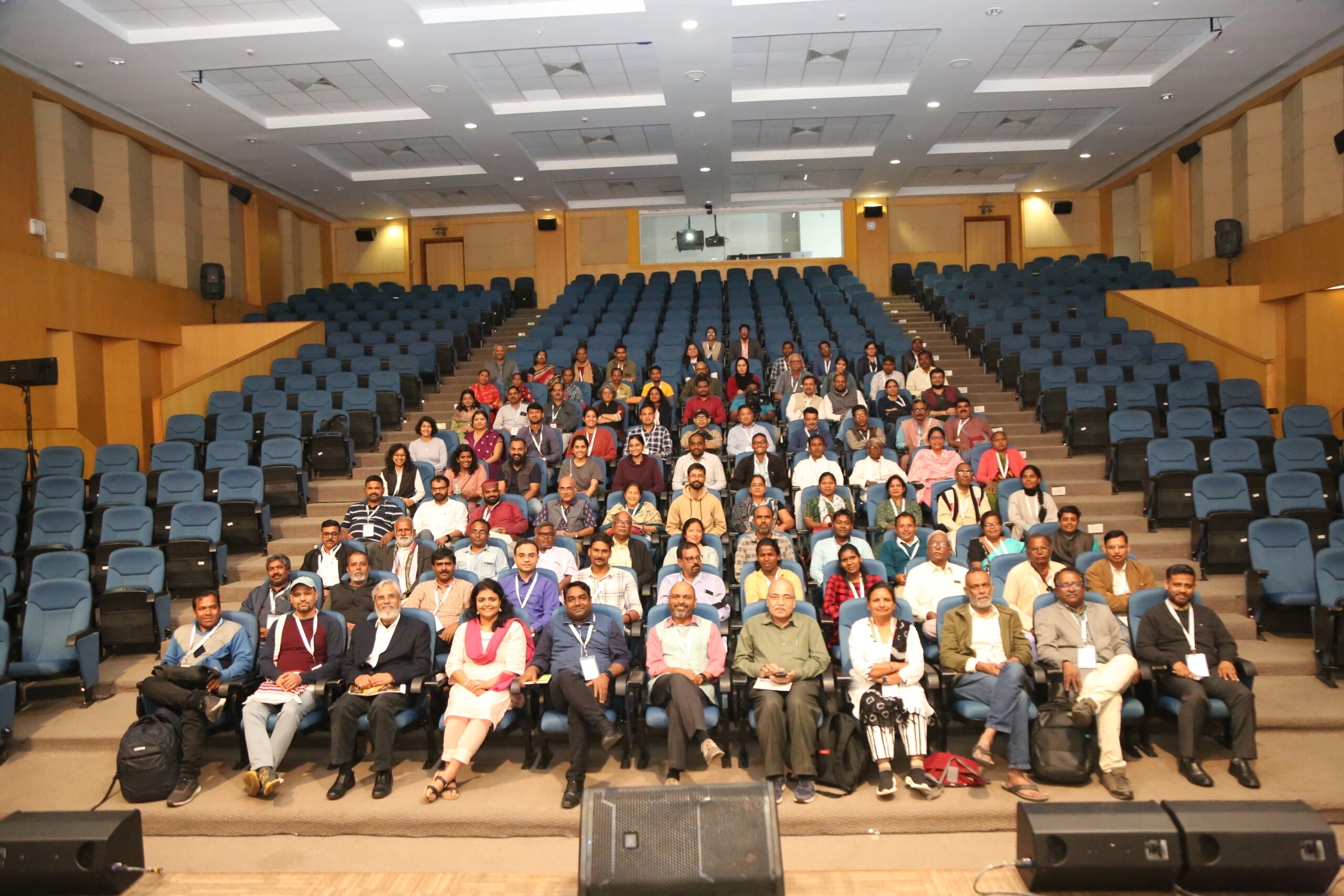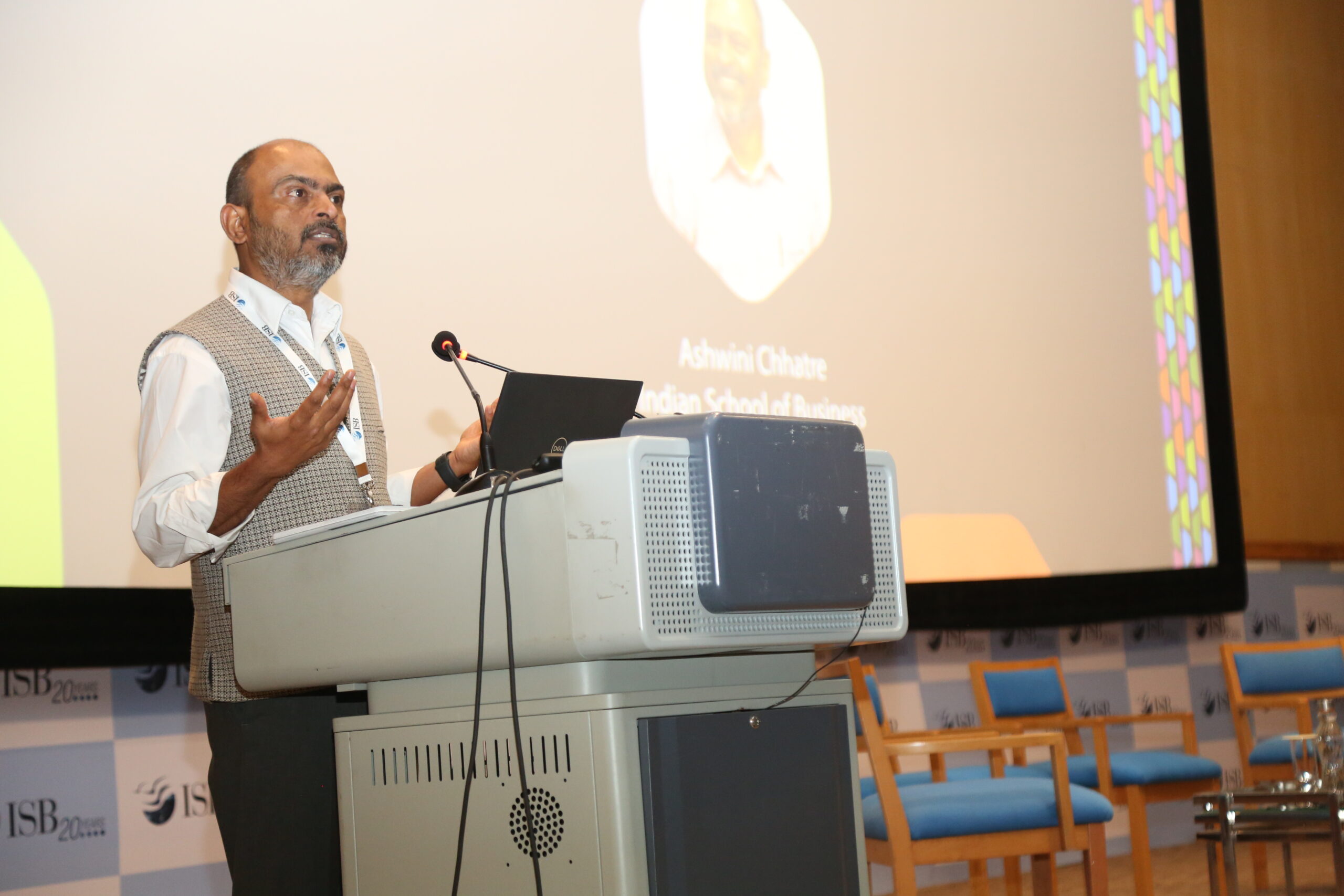Learning Exchange on “Forest Economy”

ISB Hyderabad 21-22 December 2022
Bharti Institute of Public Policy, ISB, in partnership with the Society for Rural, Urban, and Tribal Initiative (SRUTI) and Vasundhara, Odisha, hosted a two-day learning exchange at the Hyderabad campus. The event focused on strengthening and building a robust and sustainable forest economy.
This Learning exchange is the first in a series held annually, organised to set up a platform for knowledge exchange and multi-stakeholder interactions that aim to strengthen the vision of the Forest Economy in India. The event saw the participation of more than 150 key representatives from the government, forest-based communities, industry, academia, and research, as well as civil society organisations and NGOs. The dialogue discussion highlighted how the forest economy model is an opportunity based on robust economics and sound business models that will be a triple-win for communities, industry, and forests.
The two-day event started with the keynote address by Prof. Ashwini Chhatre, executive director of BIPP. Prof. Ashwini Chhatre outlined a bold new vision for India’s Forest Economy Initiative, in which empowered forest-dependent communities create wealth while also protecting and regenerating forests. The new initiative is technologically and policy-wise feasible with a multi-stakeholder approach. We are developing collaborations among industry, academia, government, and civil society to usher in this reimagined forest economy in India.
In his keynote address, Prof. Chhatre emphasised the following points:
There is a strong motivation for India’s forest economy on both the demand and supply sides. There is also a growing appetite for seasonal forest products (SFPs) as raw materials in industries like pharmaceuticals, confectionery, cosmetics, alternative fuels, and several others.
The future of the forest lies in the sunrise sector of packaging. The packaging and fertiliser industries rely on fossil fuels and emit a lot of CO2. The forest can provide better alternatives to both sectors. The technology and policy tools required to build this supply chain are readily available. Designing apt business models and making strategic multistakeholder partnerships will unlock these value chains.
Currently, the forest-dwelling communities of India are experiencing extreme poverty and a lack of access to basic amenities, but they possess rich traditional knowledge. Their knowledge and labour have been continually exploited by the informal economy. This economy primarily runs on poor wages and unfair pricing of forest produce collected by these communities. Industrial demand for SFPs should tap into the depth of this traditional knowledge and ensure that a sustainable supply can match the market demand as well as get visibility in the value chain. To ensure the sustainability of the forest and supply chain, the forest economy has three pillars: (a) Security of Tenure, (b) Economies of Scale, (c) Market Linkage
Women, the primary SFP collectors of the community, are mostly invisible in the existing forest economy. The collection of SFPs happens at an individual scale, and collectors continue to use outdated tools for collection and processing. Both informality and small scale restrict the communities from tapping into economies of scale, which are key to the economic viability of selling seasonal forest produce. Any mechanisation requires the aggregation of large quantities. Economies of scale are then definitively achievable at the landscape level, where supply chain aspects like value addition through mechanisation become feasible. Industrial jobs are created while cutting down on transportation time and costs. Conclusively, women will be able to access and receive an equitable valuation of their products without undergoing physical drudgery.
Over a span of two days, six different roundtable talks were organized at ISB, Hyderabad campus to recognize the existing challenges in the forest economy and ways to bridge the gap between industries and local communities. Here is the list of major highlights of the event wise:
Dialogue 1: Industry Perspectives on the Forest Economy
The first Dialogue reinforced the ‘motivations’ highlighted in the Keynote Address. Industry representatives from Paper and Pulp, Biofuels, Tree-based Oils and Fats, and the Cement sectors stated that there is a growing demand for a sustained supply of alternative raw materials and that forests anchored in community ownership are the most reliable sources to meet this demand sustainably.
Key takeaways: A business model to leverage the enormous opportunity presented by the bioenergy needs of the country is critical. A single platform for the multiple stakeholders involved in the Forest Economy to interact, such as the Learning exchange will help bridge the demand-supply gap through formal partnerships and pave the way for newer and sustainable value chains.
Dialogue 2: Challenges in Facilitating Community Action for Forest-Based Livelihoods
The second Dialogue exposed participants to the challenges faced by government agencies in supporting forest communities. The representatives from governments of Jharkhand, Odisha, and Maharashtra, as well as a former elected representative from Madhya Pradesh, spoke about the role of government agencies in community mobilization to prepare for business, the role of women’s collectives in facilitating collective action, and challenges faced by political and administrative units in sustaining the efforts.
The key takeaway from the Dialogue was that CFR recognition is a priority for the Government. Since there are multiple departments involved in the CFR process, coordination is challenging, and guidance from knowledge institutes like ISB is critical for expediting the rights recognition process.
Dialogue 3: Whither Communities? Recent Legal Challenges Involving Forest Governance
The idea that forests are shared spaces between humans and wildlife and that environmental and climate justice has taken a centre stage over the last decade resonated in this Dialogue. The distinguished panellists from diverse sectors deliberated on the impacts of mining on forests and communities, the perception of human-wildlife conflicts, the emergence of the Forest Rights Act for the recognition of Community Forest Resource rights, the role of Government in facilitating its implementation, and the misconception that all plantations produce win-win outcomes for livelihood security and conservation goals.
Key takeaways: The lack of implementation of recent laws and policies can be attributed to the character of their emergence, which is, that the laws and policies were a response to the pressure of international conventions and not of India’s own accord. New amendments to environmental laws have only become more regressive in the last decade. Businesses are increasingly understanding the importance of incorporating nature into their planning processes. However, we also see that the provisions of the environmental laws can be easily undermined to benefit the interests of companies. There has been a shift in power politics in the last few decades, from a strong state (extraction, centralization, exclusion) to negotiation spaces enabled by FRA, which prioritise sustainable management, decentralization, and inclusion.
Dialogue 4: Towards Democratization of Forest Governance
The Dialogue shed light on the fact that local communities are deeply involved in democratic processes. A centralized, patriarchal, and anthropocentric effort to manage forests through colonial laws with a profit motive that is based on destruction was (and to a great extent still is) unjust to the stewards of the forests, who perceive the forest as a mother. The panellists highlighted that if we are to democratize forest governance, the biocentric approach of the Adivasi community should be at the forefront, following the principle that all living beings have equal rights. Gram Sabha is already a beacon of participatory governance, and that should be the approach for forest governance too. Gram Sabha in and of itself is enough for a consensus-based democracy at the local level.
Key takeaways: Colonial laws for forests were centralized, and the Forest Department was formed to generate revenue by cutting down forests. FRA recognizes the self-governance of Gram Sabha and enables tribal communities to correct historical injustice.
Dialogue 5: Forests as Spaces of Opportunities
‘The Dialogue revealed the experiences of successful market linkages that are built on community ownership of forests. The women leaders emphasised that the local communities perceive forests as their ‘maternal home’ and nurture the forests for their sustainability. The communities, and especially women, feel a strong sense of ownership over forests as their cultural and economic processes are entwined with it. They spoke of the ways in which women organized themselves into formal collectives to anchor economies of scale, market linkages, and forest governance.
Key takeaways: FRA for CFR recognition instilled in communities the pride of being the owners and managers of forests. The community is now actively engaged in the management of forests and makes regular decisions on plantation, fire prevention, and other aspects of forest management. Women are at the forefront of enterprise operations, sustainable management, and market linkages. These processes have ensured that women are leaders today and can negotiate terms of the forest product trade.
Dialogue 6: Challenges in Supporting Community Mobilization
The final Dialogue exposed the audience to the long struggle of Civil Society Organizations in Himachal Pradesh, Gujarat, Odisha, and Maharashtra in organizing people’s movements, establishing a procedure for securing tenure under FRA, and battling obstacles in bureaucratic processes for converting the claims to titles. The panellists spoke about the myriad challenges faced by communities in organizing themselves into formal and informal institutions and the role of CSOs in co-developing solutions toward the effective implementation of the Forest Rights Act for the recognition of Community Forest Resource rights in all four states.
Key takeaways: The efforts of Civil Society Organizations were instrumental in creating momentum for the implementation of the Forest Rights Act and not just for community tenure. The process involved deep learning, dynamic adaptation to changing political and legal scenarios, and creative interventions to consolidate community action for securing tenure on forest lands.



